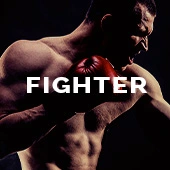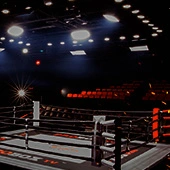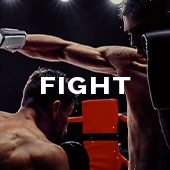by David P. Greisman
It’s impossible to settle a score when the scores don’t settle anything.
Juan Manuel Marquez had a draw with Manny Pacquiao in 2004 and a narrow split decision loss to Pacquiao in 2008. The final scorecards showed Pacquiao to be just a little bit better. Yet the parts that made those sums tilted the conclusion in the other direction – with 12 rounds a fight, and three judges for each, Marquez had been marked down as winning 41 out of 72 rounds.
Pacquiao, meanwhile, had been a one-point scoring error away from victory in 2004. Though one point gave him the edge in 2008, he’d considered himself the winner without controversy. He’d knocked Marquez down four times in two fights. Two of three judges tabbed him in the second fight, and that should’ve been the same result for the first.
These were the justifications Marquez and Pacquiao carried with them for years, evidence underlying assertions that one was better than the other.
Theirs was, and still is, a rivalry without a resolution.
Marquez turned down an immediate rematch with Pacquiao in 2004 and instead had to wait four years for a second shot. He was forced to wait again after the 2008 battle as Pacquiao moved on to bigger opponents, bigger paydays, bigger exposure and bigger stardom.
They were featherweights in 2004 and 130-pound fighters in 2008. Marquez followed Pacquiao to lightweight, hinted he’d do the same with 140, and waited while Pacquiao went in against welterweights and a junior middleweight.
Their rivalry had been heated and historic, but its future seemed to be in the past, destined to be lost to history. In 2011, they could look back at their time together like alumni at a class reunion.
“That was who we were then” – younger, the same size, Pacquiao a hard-to-tame whirling dervish, Marquez a hard-to-conquer technician.
“This is who we are now” – Marquez at 38, a smallish lightweight who’d recently been getting hit more and hurt more; Pacquiao at 32, still fast and ferocious despite the additional pounds on his frame, but also more skilled and savvy.
It seemed a mismatch to many, to the writers, boxing trainers and other observers who believed Pacquiao to be too good and too much to handle, particularly at a catch-weight of 144 pounds. Marquez, in his lone fight weighing in at 142, had looked too slow and too off-balance.
This reunion would show otherwise. Though Pacquiao is a more well-rounded student than he was in 2004 and 2008, he is still not in a higher class than Marquez.
This would neither be a blowout nor a knockout, not with a professor still capable of taking Pacquiao to school.
Marquez looked measurably better at 142 against Pacquiao than he did against Floyd Mayweather Jr.. Much of that could be credited to Marquez’s new conditioning coach, Angel Heredia, who has an infamous past as a supplier of performance enhancing drugs but who also introduced Marquez to different training methods to prepare him for the bout.
Pacquiao also wasn’t going to force Marquez to lead the way that Mayweather had. Nor was Pacquiao going to be able to lead the action as he had against every single opponent he’d faced since the last Marquez bout.
Those fighters had all been bigger and slower. They had all deluded themselves into thinking that Pacquiao wouldn’t be that fast and wouldn’t be that strong. They had all been subdued by his speed and chastened by the number of shots they’d take for every punch they threw and missed.
Marquez had adjusted to the whirling dervish version of Pacquiao in their first fight. He had stood in with the improved version of Pacquiao in their second fight. He knew the right distance and timing for facing Pacquiao, how far he would need to move back to evade Pacquiao’s double-jab and left-cross combination, where he’d need to move his head to avoid Pacquiao’s left hands.
Pacquiao was also well aware of what Marquez was capable of. There would be far fewer multi-punch combinations against Marquez, who remains capable of landing perfectly placed counters from any angle at any time. Marquez would respond immediately after every Pacquiao flurry, and if Pacquiao opted to remain inside instead of moving back out, Marquez would dig hooks to his body.
Pacquiao would not load up on power shots either. At times, he was moving out of range before finishing with following through on a punch, instead dodging Marquez’s counters.
By CompuBox estimates, the 578 punches Pacquiao that threw this past Saturday were 149 fewer punches than he threw against Shane Mosley, 202 fewer punches than he threw against Miguel Cotto, 491 fewer punches than he threw against Antonio Margarito and 653 fewer punches than he threw against Joshua Clottey.
It was only about 50 fewer than Pacquiao threw, on average, in the two previous Marquez fights. But the action was more measured, more manageable for Marquez.
Marquez had disrupted Pacquiao’s recent rhythm. He still got hit, though this time he never was knocked down. That was because he, too, was cautious against Pacquiao. He’d exchange, but he wouldn’t leave himself out of position and open to a shot he couldn’t see. He’d land pinpoint shots and connect them together into combinations – a left uppercut lead followed by a left hook, for one, or a jab followed by a looping right hand, for another – but would pick his spots.
Each was trying to set a trap, trying to make an opening, trying to catch the other with a shot that would change the tone of the fight. Each was keeping the fight close but unable to pull away.
It was high in drama but not high in action.
Many of the rounds could reasonably have been scored for either man. Pacquiao’s trainer, Freddie Roach, sensed this and told his fighter before the 10th round to go for the knockout. Meanwhile, Marquez’s trainer, Nacho Beristain, told his fighter that he was winning.
Pacquiao threw fewer punches in the final round than he had in the previous 11, according to CompuBox. Marquez threw one punch fewer in that round than Pacquiao did.
Their first two fights had ended in debatable decisions. They sent it to the scorecards once again.
The three judges agreed on six of the first seven rounds – one, three and six for Pacquiao, four, five and seven for Marquez. The judges agreed on none of the final five rounds.
Two judges, Robert Hoyle and Dave Moretti, agreed on the 12th round, giving it to Pacquiao. The judge who gave the last round to Marquez, Glenn Trowbridge, scored the fight eight rounds to four for Pacquiao, 116-112.
Hoyle had it six rounds apiece, 114-114. Moretti had it seven rounds to five for Pacquiao, 115-113.
Had Marquez won the last round on their cards, the final scores would’ve been 116-112 for Pacquiao, 115-113 for Marquez, and an even 114-114 – a three-way draw, just like the first fight.
Marquez, as with the first two fights, felt he’d won. A sampling of press scoring the fight at ringside and on television had many scoring the fight for Marquez, some tallying up a draw, and a stray scorecard or two for Pacquiao.
The marketing before the fight had been that this bout would decide who was better. That marketing seemed misguided – those fights had taken place years ago, when the fighters were different than they were thought to be now.
Marquez proved people wrong, though. He was the same fighter who could trouble Pacquiao like no other fighter has consistently been able to. He was the same fighter who’d leave with the same result – no victory, only a debatable decision.
Marquez has two losses and a draw in three fights he believes he won – three fights that Pacquiao believes Marquez lost.
It’s impossible to settle a score when the scores don’t settle anything.
Pacquiao was guaranteed $22 million, but he left the ring to a chorus of boos and left the post-fight press conference after his promoter cut off reporters after three questions.
Marquez was guaranteed $5 million, but, for a man with his pride, all those zeroes on his paycheck won’t make up for the zeroes in his win column after three fights.
Theirs is a rivalry without a resolution.
The 10 Count
1. Is Floyd Mayweather Jr. more likely or less likely to face Pacquiao now? Send your reactions and your reasons my way…
2. Five thoughts from HBO’s awesome edition of “Face Off” featuring Miguel Cotto and Antonio Margarito:
- For a guy who says he’s taken his loss to Antonio Margarito like a man, Miguel Cotto has obviously spent a lot of time believing that Margarito used tampered hand wraps for their fight. It was a silly contrast to hear Cotto say one thing and then break out a tablet computer with a photo of Margarito’s wraps after their bout.
- Max Kellerman asked a phenomenal question of Margarito that didn’t get answered: If, as Margarito said, he didn’t feel the inserts that had been placed in his wraps prior to his fight with Shane Mosley, how can he say with certainty that there was no tampering for the Cotto fight?
- Margarito had a great counter point to Miguel Cotto, who said he’s well prepared for every fight. Margarito made the logical deduction that Cotto was prepared, then, for their first fight, and that the same thing will happen in the rematch.
- It would’ve been counterintuitive to selling the pay-per-view, but I wish Kellerman had asked Cotto and Margarito more about the punishment each has taken in recent years – Cotto, in particular, against Margarito and Manny Pacquiao, and Margarito against Cotto, Mosley and Pacquiao.
– Antonio Margarito looked like a combination of Ra’s al Ghul from the Batman cartoons and Jafar from the Aladdin movies, but with the hair of Justin Bieber.
3. I remain uncomfortable with the tarnishing of CNN’s editorial integrity when it comes to pay-per-view fights put on by sister network HBO.
Manny Pacquiao had an extended appearance this past Friday on “Piers Morgan Tonight,” and there were articles about him spotlighted on CNN.com both before and after his fight Saturday against Juan Manuel Marquez.
Pacquiao is a notable figure and deserving of attention, as were Floyd Mayweather and Victor Ortiz, as was Bernard Hopkins, all of whom also got major play on CNN.com. It’s great that boxing is getting mainstream attention, and a good idea for HBO’s corporate parent to use its other networks as resources.
But despite the newsworthiness, this clearly remains a case of commercial interests overtaking editorial independence. CNN had nothing this past weekend on the big mixed martial arts broadcast on FOX, for example, and I doubt that the news outfit will do anything in advance of Showtime’s “Super Six” finale between Andre Ward and Carl Froch.
4. Juan Manuel Marquez’s post-fight interview with Max Kellerman was conducted in Marquez’s locker room, with Marquez completely naked but for the sombrero he’d worn to the ring – now covering his man parts.
I’m just glad Marquez hadn’t walked out to the ring wearing a yarmulke…
5. How do I know that Don King still has it at the age of 80?
He’s apparently still as good at misleading people as he was in his peak promotional years.
Don King’s publicist, Nov. 10, 12:17 p.m.: “Boxing promoter Don King received a gift of $500,000 from his fighter Felix ‘Tito’ Trinidad in celebration of his 80th birthday.”
Puerto Rican newspaper El Nuevo Dia, Nov. 10, 4:26 p.m.: “The five-time world champion Felix ‘Tito’ Trinidad and his father, Felix Trinidad Sr., forgave a debt of $425,000 that … Don King had with them. This, as a birthday present.”
(Translation from Google Translate and friend of the site nazarioz. Hat tip on the El Nuevo Dia article to The Boxing Truth.)
6. Pot, Meet Kettle:
The World Boxing Council released a statement last week assailing the International Amateur Boxing Association, or AIBA, saying it “appears not to have the best reputation in the world of sports.”
No wonder the WBC feels threatened. The AIBA is encroaching on its turf…
7. Boxers Behaving Badly: Art Binkowski – a heavyweight whose career peaked with an appearance in “Cinderella Man” and a victory on “ShoBox” – has been sentenced to 30 days behind bars (in addition to time already served) for violating a court order by visiting his wife, according to Ontario newspaper The Record.
Binkowski, 36, had been ordered not to see his wife after making bail in a domestic assault case. He’s pleaded guilty in that case and will be sentenced in January.
Binkowski played the part of Corn Griffin in “Cinderella Man,” but he might be better known to boxing fans as the guy who was knocked down three times by Raphael Butler but came back to win by technical knockout on “ShoBox” in 2007. Binkowski last fought four years ago, a loss that brought his record to 16-2-3 (11 knockouts).
8. No. 1 sign that a publicist made up Max Alexander’s quotes in a news release about his Dec. 10 fight with Roy Jones Jr.?
This quote: “I am 6-foot-2 with a 76-inch reach and I have a right hand that will put Roy to sleep.”
No. 1 sign that Alexander should fire the publicist?
This quote: “If I don’t KO him by [the] sixth round, I will forfeit my purse.”
9. Then again, that fight won’t be making any money anyway…
10. R.I.P. Joe Frazier, 1944-2011.
David P. Greisman is a member of the Boxing Writers Association of America. His weekly column, “Fighting Words,” appears every Monday on BoxingScene.com.
Follow David on Twitter at twitter.com/fightingwords2 or on Facebook at facebook.com/fightingwordsboxing, or send questions and comments to fightingwords1@gmail.com



